March 23 - 29, 2014: Issue 155
Roper Lars Scott (Buster) Brown Q.C.B.C.
The gentleman who worked for years to ensure Pittwater has a trained team of Water Police-people was also a champion in Surf Boats at Curl Curl when younger. A member of the Volunteer Coastal Patrol, for which he received a Life Membership just a few weeks ago, one of 7 Life Memberships, this soft spoken man is a no frills individual who has spent his life serving others.
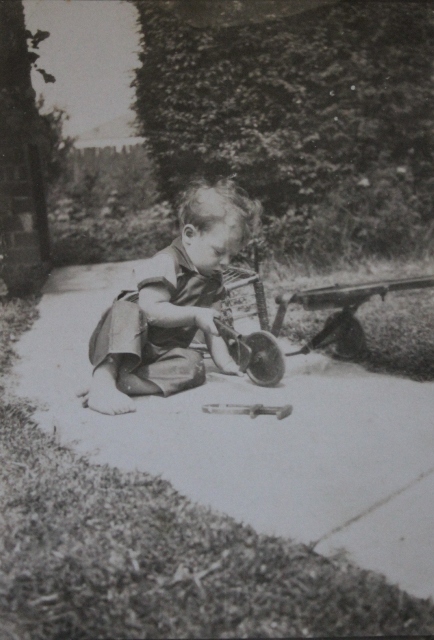 When and where were you born?
When and where were you born?
In the Rachel Foster Hospital in Sydney, 1930.
Where did you grow up?
I lived in Werribee for a short couple of years and then we shifted to Willoughby. We lived there until the start of the war (WWII) and then the whole family of kids were migrated out to the western side of Sydney and settled at Lidcombe. We lived there for the rest of my hoodlum life – or childhood. I lived there until I met my missus and got married and then we shifted to Harbord.
What was Lidcombe like during WWII?
Full of Yanks and not much else. Now it’s full of Arabs and Afghanis. I took my grandkids up there a couple of years ago to show them where grand-dad lived and there wasn’t a word in English apart from ‘Police’ on the police station. On one window of a shop it said ‘we do not talk Australian and we are not Australian’. That’s a great mindset, isn’t it?
Do you remember the day peace was declared?
Not really, I was 15 when the war ended and my main interest was looking for work. All the jobs were given to Returning Servicemen first.
Where did you go to school?
Lidcombe Public school and then Homebush High School.
What did you do when you got out of school?
I went and worked in a foundry at Bankstown Foundry as a Jobbing Moulder making engines from iron and steel, occasionally using brass; castings and engine parts. I think it’s still there now – on Parramatta road at Auburn.
I served my apprenticeship there, which took about seven years for a Moulder in total. I was going to do Metallurgy but didn’t have enough education. When I finished the trade course I got an offer to go to Queensland and work in the sugar cane industry.
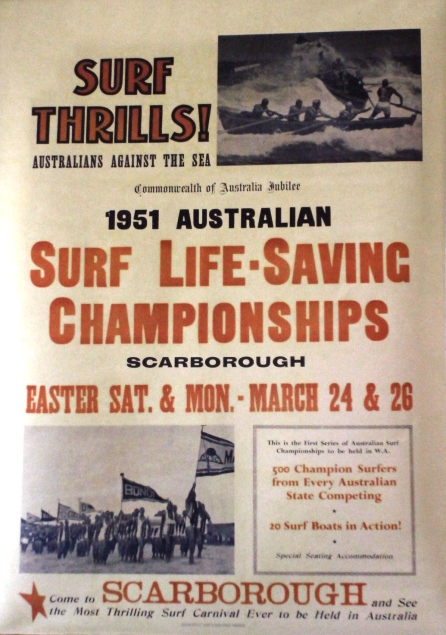 I went for the season cutting sugar cane in Coumala and
then went on to work in and around the bush; everything up there is in a system
where there’s a season – there’s a season for ringbarking, a season for fencing
etc. I did the lot and worked up there for about 12 months and that was enough
for me, I found out I didn’t want to be a farmer and came back home.
I went for the season cutting sugar cane in Coumala and
then went on to work in and around the bush; everything up there is in a system
where there’s a season – there’s a season for ringbarking, a season for fencing
etc. I did the lot and worked up there for about 12 months and that was enough
for me, I found out I didn’t want to be a farmer and came back home.
I went back to the Foundry as they’d said ‘come back here, we’ll always have a job for you’ – then about five minutes later it was a case of’ you were the last to start, you’re the first to go’. Things were getting a bit bad. I got another job at another foundry in Regent’s Park where they were working the kind of set up foundries had in the 1930’s.
It was a really slow process. They were doing large castings, making large wheels for trains and the normal rate for these was two and a half for one day and two and a half the next.
I’d learnt casting and its foundations and was making the five in one day. The shop steward came over and said “you’re working too hard, go back to two and a half a day.”
So that didn’t satisfy me so I started looking for other work.
My father was in the coppers and he said “Don’t ever join the Police Force it won’t suit you.” so I went and put my name down to join.
I passed the Entrance Exam and was one of the last ones to get trained out at Penrith in the old building they had at the Air Force base. We were up there learning law and all the other stuff you had to know, this was 1953.
That year was a big year, 1953. I’d gone into the South Curl Curl Surf Club when I was 15 and was in the rowing. I worked my way up through the B Grade to A grade.
In the first year we did a trip to Western Australia on the back of a truck. It was very exciting – every time we came to a waterhole on the trip across we’d put the boat in and have a row practice.
We went to Scarborough for the championships that were on there and we came second.
That same year I met my missus, she lived in Harbord. We went around for a year or two and finally I married her in 1955.
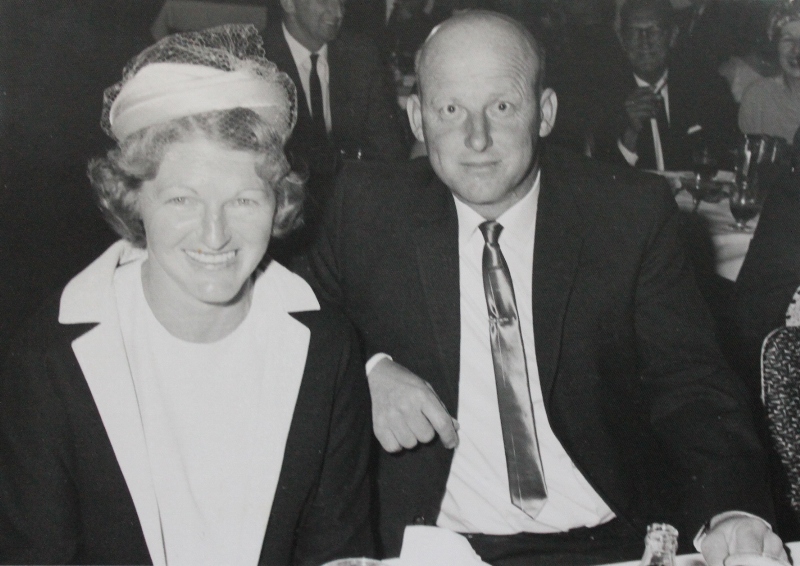
with wife Agnes.
The next year, 1954, I was still rowing A crew, and we won the National Title. Here we were, the first team from Curl Curl, to ever win a National title.
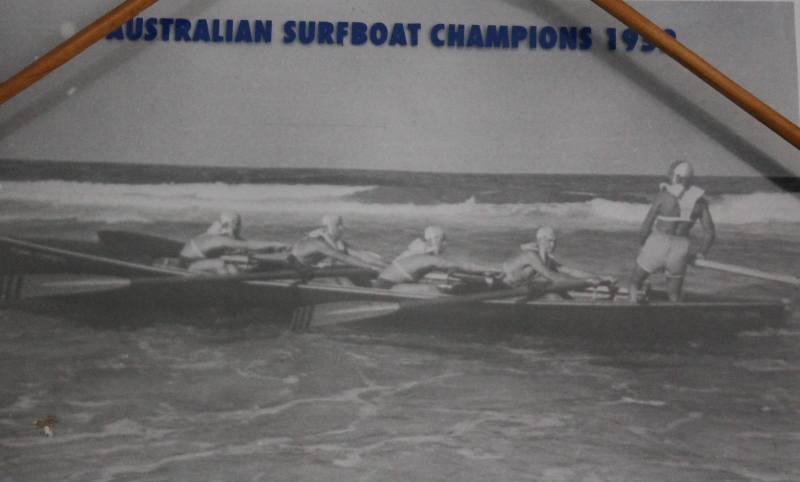
South Curl Curl – Boat Crew: Sir Adrian Curlewis was Patron of the crew's Jack Wilson surfboat.
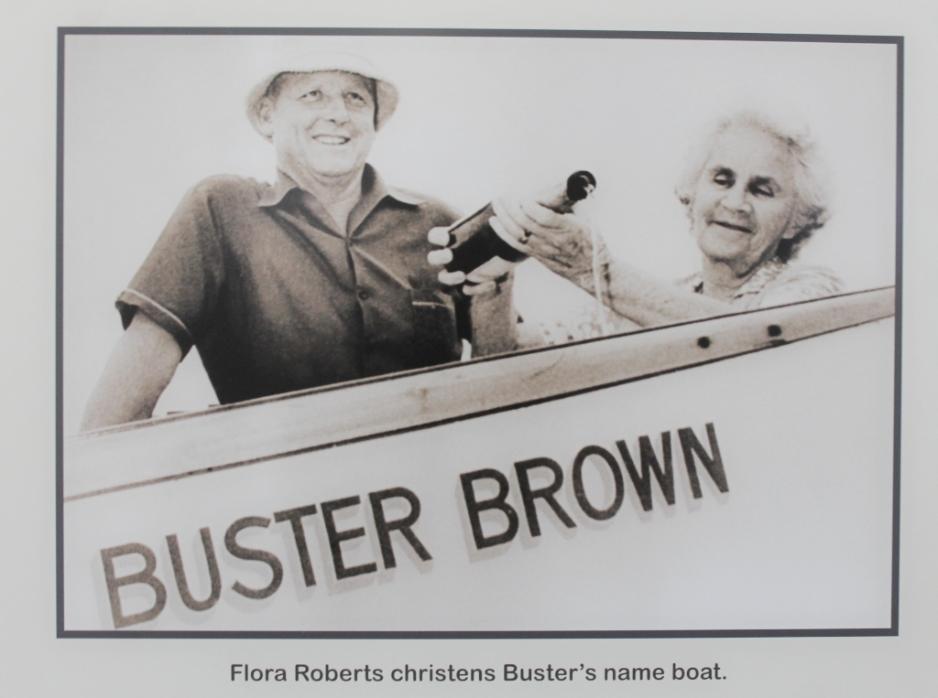
When did you start with the Royal Volunteer Coastal Patrol?
1960. I continued to row for another season but we didn’t have the spirit that we’d had before, we couldn’t get interested. I did become a Life Member there though. I won the Honour Blazer which was the highest ranking and an indication of all the extra things you could be involved with in the Surf Club. My eldest son, incidentally, won the same award twenty years later. We were the first father and son in the club to do this. Now my grandchildren are involved so they’ll be keeping the name going in the club.
What, to you, is the best thing about joining a Surf Club?
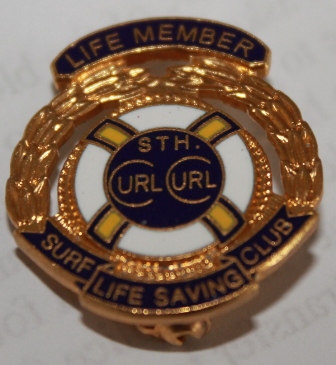 It was the greatest part of my life. I didn’t have a family
life because my brother had polio. My father and mother had their whole time
taken up looking after him. So I stayed at the Surf Club then we rented a shack
a few streets away from the Surf Club and I lived there mainly for a year or
two. A president of the surf club and his wife became like my mother and father,
they adopted me, and it was like nothing ever happened except in the Surf Club
for a few years there.
It was the greatest part of my life. I didn’t have a family
life because my brother had polio. My father and mother had their whole time
taken up looking after him. So I stayed at the Surf Club then we rented a shack
a few streets away from the Surf Club and I lived there mainly for a year or
two. A president of the surf club and his wife became like my mother and father,
they adopted me, and it was like nothing ever happened except in the Surf Club
for a few years there.
It wasn’t until the 1960’s when the Volunteer Coastal Patrol invited me to be a guest speaker. I was in the coppers by then and they were officially an auxiliary of the Water Police at that time. They wanted to know a bit more about what we did.
You see during the war the Water Police was practically down to nothing, all our boats were pinched by the Yanks, and the Harbour was patrolled by the VCP. They looked after the harbour (Sydney Harbour) and in fact dropped a depth charge on one of the submarines that came here during that time.
That night that I went to speak I didn’t have a beer, I thought I’d wait until I’d finished my talk. Just after I finished my speech a fellow came with a note looking for Constable Brown. That was the night the Viscount Airliner crashed in Botany Bay.
I had to go report to work straight away, in my dinner suit, and I was in the Flood-Boat section by then. We took our Flood Boats up to Liverpool- we didn’t know where the plane had crashed, they knew it had crashed in the water but they didn’t know whereabouts exactly. So we went up to Liverpool and came right down the George’s River.
By the time we got to Tom Ugly’s Bridge they’d found the aircraft – it was right in the middle of Botany Bay. We took our boats over there and started – in those years the Navy was supposed to do any body recoveries from civilian aircraft. The first few divers that went down from the Services came up spewing in their face masks, they couldn’t handle it.
Their Senior bloke got embarrassed, went crook at them and said “I’ll show you what to do.” And he went down, and he came up spewing in his face mask.
So that really put our divers on the map because of course when everything and everyone else fails the coppers get the job. We worked there for a week to ten days recovering bodies – every person was in a terrible state – and we had to recover every part, convey them to a Morgue tent set up near the end of the main runway. It's amazing how they identified everyone - they even went to people's homes to collect hair from combs and the like to so they could identify all correctly. I recall one reporter who visited us said “these men will never be the same again.”.
Viscount Wreck In Botany Bay AIRLINER SPLIT OPEN IN CRASH. SYDNEY, Friday.—Police skin- divers late to-day found the fuselage of the Ansett-A.N.A. Viscount airliner which crashed last night in Botany Bay, killing 15 people. Nine of the 11 passengers were from Canberra. The skin divers said the fuselage was lying in about 25 feet of water and split open "end-to-end."
Bodies Found. The divers said bodies could be seen inside. The bodies of a man and woman floating near the wreckage were recovered late to-day. The Minister for Civil Aviation, Senator Paltridge, said in Melbourne a special board would hold a public inquiry into the crash. A spokesman said to-night the Department of Civil Aviation did not know yet whether the plane exploded in mid-air. He said injuries to the bodies recovered could have been inflicted by an explosion or by the impact of the aircraft hitting the water. The Viscount, owned by T.A.A. but on charter to Ansett-A.N.A., left Kings-ford Smith Airport last night at 7.17 p.m. The plane's pilot, Captain S. Lindsay, was reported to have been ordered to fly over the sea to avoid thunder-storms.
Three minutes after take-off Capt. Lindsay radioed at 5,000ft. and gave his call sign: "Tango Victor Charlie," and added "Thank you."
At 7.22 p.m., all communication with the airliner was broken. Airport officials immediately brought emergency procedures into operation and informed police. After a radio appeal, reports were given of an explosion seen over the sea off Malabar.
The Prime Minister and Dame Menzies said in a message of sympathy yesterday,
"We have been shocked by this appalling air tragedy and send our pro-found sympathy to the bereaved families. We are deeply moved by the sorrow of our fellow citizens in Canberra." Viscount Wreck In Botany Bay AIRLINER SPLIT OPEN IN CRASH. (1961, December 2). The Canberra Times (ACT : 1926 - 1995), p. 1. Retrieved from http://nla.gov.au/nla.news-article105854369
The Viscount crashed on November 30, 1961 killing the 15 people aboard. Nine were from Canberra. FORTNIGHT DELAY IN INQUIRY. (1962, May 23). The Canberra Times (ACT : 1926 - 1995), p. 9. Retrieved from http://nla.gov.au/nla.news-article13057573
That’s a horrendous job Buster.
Yes, I think it will tell on me for the rest of my life. It’s ancient history now.
At any rate, from then on I maintained an interest in the VCP. I was stationed at Dawes Point at Circular Quay – I did ten years there as an apprentice, got to know everything there was to know. When I got to be a Sergeant they said ‘well you can jump off – you’re the last to be promoted, you’re the first to go.’
I’d heard this story before.
I was transferred to Mosman. Mosman was like a penal servitude station. the blokes there had all lost interest in the job, they were all sent there for penal servitude and they couldn’t have cared less. Demoralised.
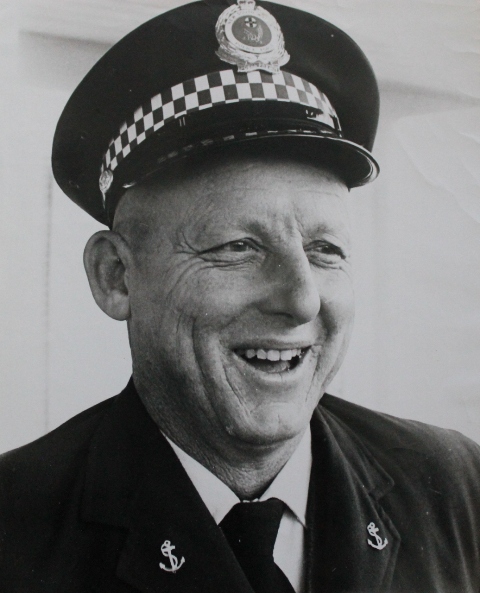 I’d been on Water Police duty for ten years so I had to get
out the rule book and learn the rules of General Duties Policing, which didn’t
come too easy. None of the blokes on my shift could drive a car, they were all
too junior. None of them could work the switchboard. So I had to run around with
a couple of probationary constables on one hand and a rule book in the
other.
I’d been on Water Police duty for ten years so I had to get
out the rule book and learn the rules of General Duties Policing, which didn’t
come too easy. None of the blokes on my shift could drive a car, they were all
too junior. None of them could work the switchboard. So I had to run around with
a couple of probationary constables on one hand and a rule book in the
other.
It carried on like this for about six months and I was fed up with it and about too put in an application to join the Maritime Services Board. I had the Maritime qualifications and was sick of the job I was doing.
The night I was due to put in my resignation one of the blokes on the shift didn’t come to work so I sent over to Manly coppers and asked them to go around and see him, but he thought it was his day off and didn’t come to work – it was the worst day of my life in some ways. There was a bureau –cyclist, a highway patrolman they call them today, he’d fallen off his motorbike and broken his leg – I had about four other serious accidents that shift. I had a lot of paperwork, which you get in the police force, traffic enquiries, all sorts of things, and as I was getting into this my transfer to Collaroy came through. I hadn’t even applied for it.
I shut up the shop for the nightwatch and at three o’clock in the morning I was still typing to get the backlog of work done and the Night Officer tour, in our job you have a Night Officer who goes around to all the stations to check the prisoners and all your work, this that and the other. He said ‘what are you doing here? You should be home by now.’ I explained what a day I’d had to him and so he sat down at another typewriter and started helping me. He worked with me for about two hours and by this time it’s breakfast time so he drove me home, as I’d missed my bus, and I had to start at Collaroy at eight o’clock!
What was Collaroy like ?
I worked on the motorbikes and sidecars – I did summons and warrants. It was a great station to work at for experience because on a Friday night two of us would put the motorbikes in the shed and work in a car together. The bloke I was put with was a fellow called Jack Hammond and he was a brilliant tactician I learnt a lot from him.
We copped fatal accidents by the score. We had a shipwreck one week; the Birchgrove Park. The Birchgrove Park was a collier that used to carry coal between Newcastle and Sydney. When they got to Broken Bay they thought they’d shelter in there for a while but it was just as bad in there so they pushed on.
When they got off Avalon their load shifted and upset the balance of the boat, she would have been about 180 foot I guess, and she tipped over and sank about a mile and a half off Avalon. That would have been 1956.
COLLIER SINKS NEAR SYDNEY HEADS. SYDNEY, August 2. - Nine men were drowned, one is missing and four were saved from the collier Birchgrove Park, which sank within sight of Sydney Heads today. DESPERATE;. Shivering crew members in lifejackets huddled on the listing collier's deck for 10 minutes before the 640-ton vessel keeled over in pitch darkness. Their S.O.S signals were sighted at 2.45 am., minutes before they were ordered to abandon ship and leap into icy, raging seas. The survivors dived into the water and swam towards a half-submerged lifeboat which was torn from the ship's side. A third survivor joined them, but died in the lifeboat three hours later as his companions fought to reach shore. The men finally were washed ashore at Lobster Bay, 27miles south of Gosford.
They are Carl Olsen, 35.fireman, of Matraville, Sydney, and Neil Stuart, 29, able seaman, of Manly, Sydney. Their dead companion was the ship's cook, Charles Camilleria, 49.of Pott's Point;, Sydney. Olsen and Stuart staggered ashore at Lobster Bay and were rescued and taken to a shack by a local fisherman.
CARGO SHIFTED. Tonight, Olsen said the cargo of 500 tons of coal began to shift as soon as the collier left Newcastle late yesterday. He said the listing was noticed a few miles from Newcastle, but little notice was, taken at the time because the collier, when loaded, always listed to starboard. Olsen said the shifting of the cargo became more pronounced during the night and eventually it became impossible to control. He said the skipper, Captain Laurence Lynch 37, finally called: "All hands clear” as the ship was about six miles off Sydney Heads. The 14 crew members had donned lifejackets waiting for the last moment to leap overboard. He said that as the ship began her last dive the crew Jumped overboard. Olsen said some men grabbed pieces of timber and tried to hang on. He said it was impossible to lower lifeboats because the ship was listing too badly. COILLIER SINKS NEAR SYDNEY HEADS. (1956, August 9).The Central Queensland Herald (Rockhampton, Qld. : 1930 - 1956), p. 27. Retrieved from http://nla.gov.au/nla.news-article79267261
1939-07-24. AERIAL STARBOARD SIDE VIEW OF THE COASTAL
COLLIER BIRCHGROVE PARK PRIOR TO HER COMMISSIONING INTO THE RAN AS AN AUXILIARY
MINESWEEPER. (NAVAL HISTORICAL COLLECTION) (ALSO FORMERLY P0444/214/179) image:
300414, courtesy AWM
Diver's body found. SYDNEY, Sunday. —The body of a skindiver who disappeared on March 19 this year while diving to the wreck of the collier Birchgrove Park, three miles off Avalon Beach, was recovered today.
It was found by a team of skindivers from the Canterbury Underwater Club, which was diving to the wreck during the weekend. One of the divers, Michael Kenny, of Bundeenan, said the body had been found lying half-covered in sand alongside the wreck near the propeller. The divers had returned to the surface and got in touch with Sydney Water police, who had requested that they recover the body. Police have yet to announce the name of the dead man. Diver's body found. (1972, May 1). The Canberra Times (ACT : 1926 - 1995), p. 9. Retrieved from http://nla.gov.au/nla.news-article102018864
Where were the fatal accidents occurring then?
We worked an area from William Street Brookvale out to Palm Beach because Avalon station didn’t work of a night and our left hand boundary was Hornsby. The Wakehurst Parkway – there were quite a few accidents there. One night I had the worst accident while working at Collaroy station – there were three killed and five injured, a car rolled over a motorbike – there’s too much blood and guts in this line of work, or so I found.
We handled situations like a bloke slaughtering a pig in his back yard and some of the most amazing cases that you could come across. A woman died in Brookvale and was dead six weeks before anybody found her. She was fly blown and was quite smelly work tending to her. Somebody had to do it and everything fell on the copper’s shoulders.
Did they offer any kind of counselling in those days Buster?
Counselling?! (laughs); It’s funny you should ask that; I don’t think they’d heard of it then. The first counselling I ever remember was when they were doing the Milat murders and interviews; he was the backpacker killer. The police that were doing the searching for the people in the scrub were counselled every three or four hours. That was the first we’d ever heard of counselling.
When we had a bad job we would finish the work and our shift and go to the pub and have a couple of beers. No one would believe some of the case that we had to handle, it was horrendous at times.
I remember one bloke who had put an elephant gun into the roof of his mouth and I had to pick up all the parts – there was quite a lot of them over the years, that kind of job you had to attend.
There were other kinds too though; I got a warrant for a bloke who lived on the southern end of Mackerel. I got out the boat and went over to where his house was, he had a shack up there, up the top of the hill. When I got there I told him to pack his pyjamas and he said ‘would you mind if I had a plonk before we went?’ ; a plonk is a glass of wine, the heavy version. So I said yeah, alright. I didn’t realise he was already full of it and one more was enough to knock him over.
I had to carry the bugger down the cliff! Very exciting.
When we had Prince Charlie out here I’d give him a trip on the bay – the Army had sent him out to have a look at Currawong. We had another Royal visitor – they put her on Boomerang, that big yacht that the mouth organ people used to own
Frank Albert or the Allan’s Music people ? Both had a yacht called 'Boomerang'…
The Allan’s people. That yacht was completely rebuilt for that trip, new motor and everything in it, refurbished throughout. We escorted her around into Refuge Bay.
They anchored in the middle of the bay and had their lunch. We sat at the entrance of the bay in the boat, with no lunch, and waited for her pleasure. She then went for a ride in a speedboat and thought it was great fun to zoom across the water right at us and at the last moment turn away. At any rate, we got her home in one piece.
I think I was still at Collaroy at this stage and this illustrates how varied the work was, how many kinds of jobs you attended to.
Where were you posted to after Collaroy?
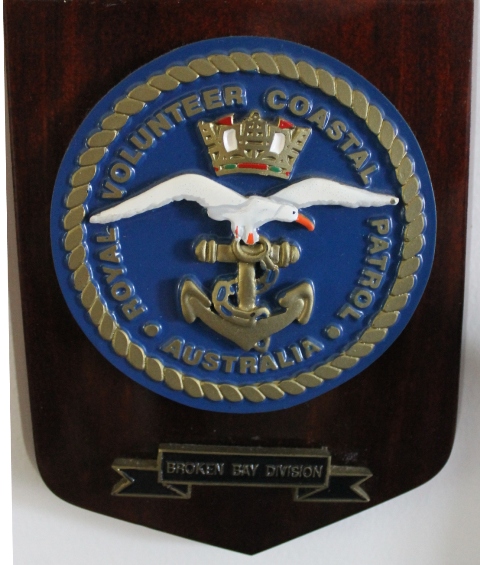 I went to Mona Vale. Mona Vale was, at that stage, having a
lot of boat problems. They had no one with any experience. Four men were
proficient. We had an outboard on a dinghy – it was one of the old flood boats,
we used it in our night work for quite a few months until we got a decent boat –
a 26 footer with a single V8 motor – the Vanguard.
I went to Mona Vale. Mona Vale was, at that stage, having a
lot of boat problems. They had no one with any experience. Four men were
proficient. We had an outboard on a dinghy – it was one of the old flood boats,
we used it in our night work for quite a few months until we got a decent boat –
a 26 footer with a single V8 motor – the Vanguard.
The Vanguard had been stationed up the north coast at Forster and the worm had gotten into her. They decided to put a new boat in at Forster, patched the Vanguard up and we got her. I had to go up and train people in the use of an aluminium boat and an outboard.
I spent a few weeks doing that on the morning shift and of an afternoon I went fishing.
What did you catch?
Bream beautiful bream – all the oyster leases attracted the bream. The big black bream had these two front teeth and would chew into the flat side of the oyster and suck the oyster out. This way they’d grow big and taste lovely.
So back to Pittwater?
We kicked along with the Vanguard for a while until she wore out. I still only had four men and was expected to man the Police boat with a crew of two as many days as we could possibly make it.
What was your patrol area then?
Mainly Pittwater and the Hawkesbury. We did medical calls up the Hawkesbury and the Brooklyn boat was not working. The ambulance station was at Mooney Mooney Creek at that time. We’d bring some of them back down here.
When I first got there I put in for extra troops and I think we got four. You needed six really. We got a boat called the Valiant then – that was the Valiant number one; a 26 footer with a single screw – we were still working only Pittwater, the Hawkesbury and up into Gosford. We did a bit of sea work but it wasn’t our role to then.
We were appointed as a sea search and rescue authority about 1965 I think. It became our responsibility then. Some people were going crook because I’d be going to sea with two men on the Valiant and quite often, because I couldn’t get a deckhand, I’d have to go and work on my own – that’s why I carried a dinghy so I could anchor the Valiant, row ashore and attend to the problem and so forth.
I put in for a better boat and more men - I think by the time I finished we had eight men and were still using the General Duties blokes as deckhands. This was a bit stupid because if I fell out of a boat they couldn’t even turn the boat back to come and get me and I was the most important bloke in the boat.
So I began teaching them how to drive the boat, how to start and stop the engine, and how to come to my aid if I fell over. I periodically threw something over the side – a life buoy or a bottle, and I’d tell them – ‘I just fell over – go and pick me up.’
I’d put a watch on them and tell them ‘I’m timing you.’
One bloke went round and round in circles and he couldn’t get me – he couldn’t get the bottle. He kept going round and round in circles and I thought ‘this bloke’s never going to be a boatman, no points for him, thumbs down’ . I said to him ‘what are you interested in?’ and he said ‘photography… and I like drawing’ , so I said ‘I think the scientific branch would be a lovely job for you.’
I rang the boss of the scientific branch and said ‘I’ve got a bloke here who’s terrific with a camera and terrific at the sketching plans of accidents – do you want him?’ So I got rid of him – left room for one that could steer a boat.
How many were on a shift ? One on the radio back at the shed and…
No, there was no one on the radio – we’d have at the most two on the boat per shift at that time.
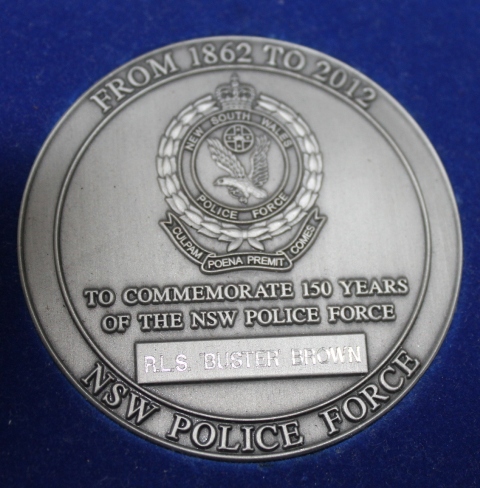 On one occasion I was working on the boat while we were
moored at Church Point up at Mitchell’s Boatshed, we got free board and lodging
there, and I could hear this yelling. I got out to have a look-see and there
was a bloke with his head out of the for’ard hatch of a boat yelling and
screaming and we thought ‘something wrong with him’. We jumped in the boat, I
had a young bloke with me who couldn’t drive, couldn’t do Resuscitation. When I
got there this man and woman were suffering from very highly toxic carbon
monoxide poisoning. They’d been in the boat and they’d had the engine running
and there was a hole in the exhaust. The gas had slowly filled the boat up. I
had to Resus. the woman first and get her out on to the back cockpit where there
was fresh air. She kept passing out on me. I got her reasonably stable and I had
to get the bloke. He was stuck in the four feet hatch. He was a big bloke,
couldn’t get out of it, he was stuck,. He’d tried to get out and jammed himself
in there.
On one occasion I was working on the boat while we were
moored at Church Point up at Mitchell’s Boatshed, we got free board and lodging
there, and I could hear this yelling. I got out to have a look-see and there
was a bloke with his head out of the for’ard hatch of a boat yelling and
screaming and we thought ‘something wrong with him’. We jumped in the boat, I
had a young bloke with me who couldn’t drive, couldn’t do Resuscitation. When I
got there this man and woman were suffering from very highly toxic carbon
monoxide poisoning. They’d been in the boat and they’d had the engine running
and there was a hole in the exhaust. The gas had slowly filled the boat up. I
had to Resus. the woman first and get her out on to the back cockpit where there
was fresh air. She kept passing out on me. I got her reasonably stable and I had
to get the bloke. He was stuck in the four feet hatch. He was a big bloke,
couldn’t get out of it, he was stuck,. He’d tried to get out and jammed himself
in there.
I had to go down and pull him back into the boat and drag him along back out to the cockpit. The result being that I sucked in a lot of the carbon-monoxide.
You talk about radio, we couldn’t get anybody on the radio because Church Point is a very dead area for that. finally Gosford picked up our Mayday call and they rang an ambulance for us. The ambulance came and got the bloke and his shiela. When they got them on the ambulance I just sat down and relaxed and began to vomit.
My offsider said ‘we better get you to a hospital.’ So I had to leave him wuith the boat, he couldn’t drive the bloody boat. at any rate, I went to hospital and finished up alongside my two patients, the people I’d rescued. I had the same treatment that they did but had sucked in more gas then they had so I was there longer. They signed themselves out after six or eight hours and I was there for a couple of days. I still suffer from brain damage as a result of that where I can’t, if I go upstairs, my brain doesn’t know how high to lift my feet. I trip up stairs.
I ran into a bloke called Wally Tetley, who worked at Newport Boat Sales, when I explained this to him he said ‘you’ve got carbon-monoxide poisoning’, and for the rest of my life I’ve fallen up stairs. Nowadays when I have to go up stairs I hang on to the two rails which keeps me upright.
That would have underlined that you needed more trained crew and equipment to cover the varying aspects, like gas masks?
Oh yes, you need lots of equipment if you’re going to go in the rescue business. That didn’t happen again, that was a one off.
Let’s talk about the Votan rescue – was that the biggest rescue you did?
It was the longest, took us about 12 hours. The sea was ginormous. The yacht was trying to get back into Broken Bay when they found the sea was so bad – their sail broke, their engine broke, they finished drifting up past Terrigal. When they got past there they hit a bombora. They rolled over, did a 360, and broke the two masts. So the masts were hanging over the side still attached by the lines.
When we got up there they’d got as far as Norah Head and they then ran into a second bombora. Now the waves were twice as long as the boat at least – we had a new boat in 1970 and this was in 1974. We had the Falcon.
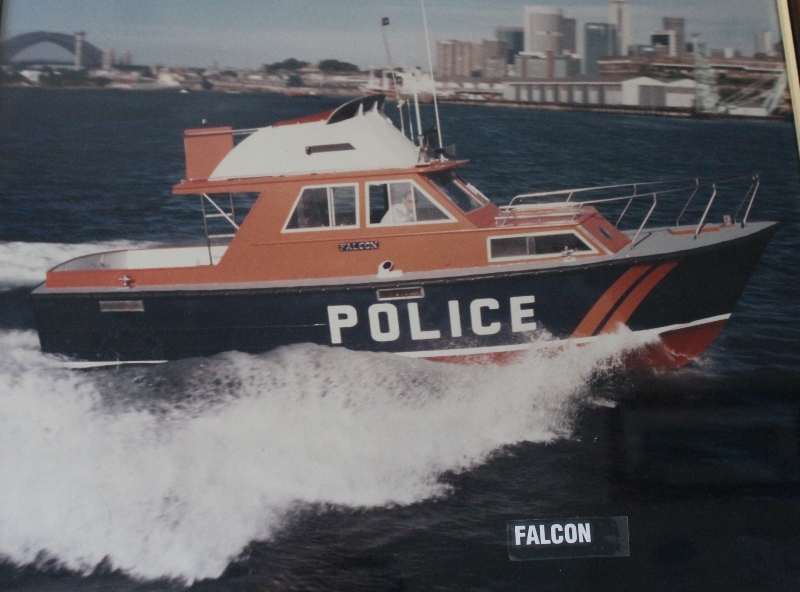
The Falcon I
I’d studied bomboras – there used to be one at North Steyne, Manly. When I was in the Surf Club I used to study the bombora and work out the timing of the waves and so forth – I found they were frightening. So I had a little bit of experience about bommies and I took the boat in there.
We got aligned to them but they didn’t know what to do so we had to bloody tell them what to do.
We didn’t know until afterwards that one of them was a solicitor, one of the sons of the Wedgewood family. He’d been washed overboard some time before we got there and of course in that kind of sea he wouldn’t have lasted two or three minutes.
We put the first on to them and we pulled it tight. As we tightened up the rope the biggest wave of the year came up. I gunned my boat to get up through it. When the yacht came to go up through it he didn’t have enough momentum and the rope snapped. So we had to start all over again and get a second line to them.
We got the second line onto them and managed to hold them off to us then and got out of the bommie itself. We headed about a mile away from it and decided we’d get these people and put them on our boat. We got the five people off – four men and one Japanese shiela, one at a time. They didn’t want to do it but we told them to jump into the life-ring and we’d pull them over to our boat.
Well Friendly, he was on the back transom, with Boots hanging on to his belt so he wouldn’t fall in. He pulled them – he pulled them up into the boat and dropped in the cockpit and then threw the buoy back to the next person. We got them all in.
Their boat was, it never sank while we were there, but it was very low in the water, full of water with all the rigging hanging off it, and it was almost dark. I wasn’t going to leave them there alone after dark, we might have lost the lot of them.
Once we got them all aboard I set sail for south. We actually got blown backwards five miles in an hour. The storm was the biggest we’d seen for many years. I was looking out at the light at Norah Head and instead of me gong past it I was actually going the other way – we were being blown back. It was going past me – not the other way around, I thought ‘it’s not supposed to do that!’.
I ran into this big row of waves – now, I’ve always counted the number of waves in succession and quite often it was an odd number and usually eleven, twelve or thirteen would be the maximum in any regular kind of sea. I counted up to fifty waves, and they didn’t get any smaller, so I stopped counting. I started to think, maybe we couldn’t make it. And these people were cranky at losing their boat, cranky at having to get wet and I had them all stacked in the bloody four feet cabin. Brian put mattresses on the floor, because I never left the wheel – I was on the wheel for a good 12 hours. At any rate we put them in the cabin, low to the ground so their weight would be low in the boat.
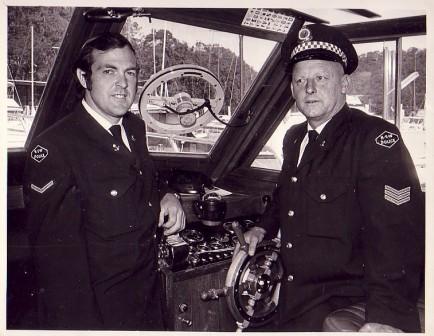 The wind was heaviest when we were going backwards. It
eased off a bit and I managed to make headway - I was able to make about one
mile an hour, the sea up and down like a yoyo the whole way. I finally saw a
ship at sea, travelling south, and I knew from his lights and what distance from
us he was – you see all ship lights have a distance they’re visible - so I came
in to where I could see by his ship lights that I was two miles off him. I then
ran a parallel course with him – we couldn’t see the shore – so I went that way
on a southerly heading for six or seven hours and finally we saw the first of
the Barrenjoey lights. There’s four flashes on the Barrenjoey Light – it was at
least four hours before we saw the four flashes intact. By dead reckoning I’d
say I was ten miles off the reef at the Northern side of Broken Bay where the
Maitland was wrecked – we’d been blown that far out.
The wind was heaviest when we were going backwards. It
eased off a bit and I managed to make headway - I was able to make about one
mile an hour, the sea up and down like a yoyo the whole way. I finally saw a
ship at sea, travelling south, and I knew from his lights and what distance from
us he was – you see all ship lights have a distance they’re visible - so I came
in to where I could see by his ship lights that I was two miles off him. I then
ran a parallel course with him – we couldn’t see the shore – so I went that way
on a southerly heading for six or seven hours and finally we saw the first of
the Barrenjoey lights. There’s four flashes on the Barrenjoey Light – it was at
least four hours before we saw the four flashes intact. By dead reckoning I’d
say I was ten miles off the reef at the Northern side of Broken Bay where the
Maitland was wrecked – we’d been blown that far out.
At this time the Police launch Allen came up to help us. We were doing pretty well by then ourselves but it’s always comforting to have company in the form of a bigger boat and cuddle under their arm. They couldn’t see us though because of the sea. So I said ‘put up a flare’ so dear Brian (Friendly - Brian Friend OAM) , he got out the flare gun, and we had an older one, and at the moment he fired it the boat kicked up in the air and the flare hit the bridge. It ricocheted off the bridge and almost went into the cockpit – we had a leaking petrol engine, a carbie full of saltwater and petrol – if that had gone in the cockpit we would have been blown to kingdom come. At any rate, it ricocheted out into the ocean but the Allen didn’t see us so we had to fire another one. They then spotted us – we weren’t really far away from them but they couldn’t spit us prior to then because of the sea.
I knew exactly where we were then of course. At last we could see the Barrenjoey, four flashes, ‘that’s home, let’s get in there.’
You must have slept for a week after that one…
Would you believe, Brian and I had to go to work the next morning?
Didn’t they have any relief Water Policemen?
No, they didn’t have anybody.
Why didn’t they train some more people for the water?
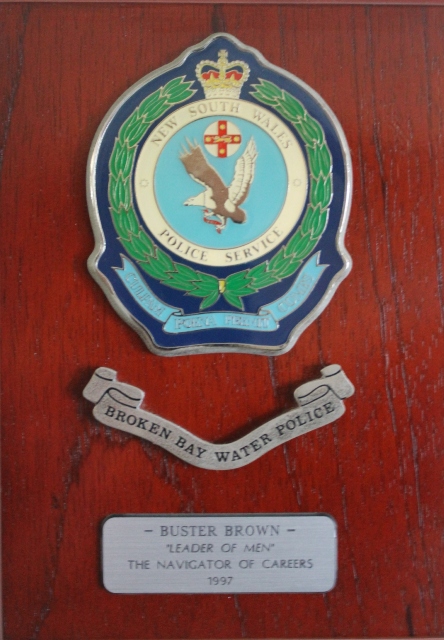 I spent the 14 years I was there writing reports telling
them it was vital that the crew be increased. Because of the rescue, the Votan,
they finally took notice of us. A year or two later they
announced that it would be a full time Police Station. They put 18 men there. We
were able to have a decent crew, a trained crew, oh mate, it made so much
difference – finally.
I spent the 14 years I was there writing reports telling
them it was vital that the crew be increased. Because of the rescue, the Votan,
they finally took notice of us. A year or two later they
announced that it would be a full time Police Station. They put 18 men there. We
were able to have a decent crew, a trained crew, oh mate, it made so much
difference – finally.
You would have got a few hours sleep of a night ?
Oh yeah (laughs). All of a sudden you didn’t have to work morning and night. We were able to go to work and of something had happened you could have the next day off and recover.
We finally got the people into Pittwater – the Palm Beach wharf had three foot of water over it because the tide had been held up in the river by the storm, and the backwater was held right up, so I took them to the Royal Motor Yacht Club. They’ve got a high wharf so I was able to go alongside the wharf there and meet the ambulance and get them off safely. They all went to hospital.
Brian, (laughs) Brian kissed our boat, and I just sat there and almost collapsed.
Was that the worst rescue or incident you had to attend?
No, the worst job I ever did was the Viscount airliner crash. The Votan rescue was the biggest sea I’d ever been in – it was so bloody rough.
What other duties, apart from medical trips, rescues and guarding Royalty having lunch up the river, did you have?
We were the Fire Brigade on the water. We used to do all that from the Police boat; we had a three way pump, so you could suck your own bilge, you could pt a pipe into another boat and suck that out or use that to suck sea water to fight a fire.
Anything that caught fire on the western foreshores we looked after. With boats, most boats, they’ve got to fill up and sink before the fire will go out. We did do quite a few of those though; it reminds me of a story – we went up to Palm Beach, there was a boat on fire just off the Palm Beach wharf. Boots’ brother worked at the machine shop there – the one back towards Careel Bay. The Shore Fire Brigade arrived with sirens and flashing lights and all that other stuff. They parked on the beach and the officer got in a dinghy and rowed out to the boat on fire at which point he said ‘oh, we can cover this, you blokes can buzz off now.’
He went back and got a hose and hung onto the hose over the back of the dinghy and pulled it out until he got near the fire and then sang out to the Fire Brigade ‘turn on the pressure!’
Well, I don’t know whether you’ve ever seen a jet boat; this dinghy went around the bay so bloody quick with a jet stream pushing him. (laughs)…it was the laugh of Pittwater there for a while! He was sorry that he told me to piss off….(laughs)….
How many years were you in the Police Force all up?
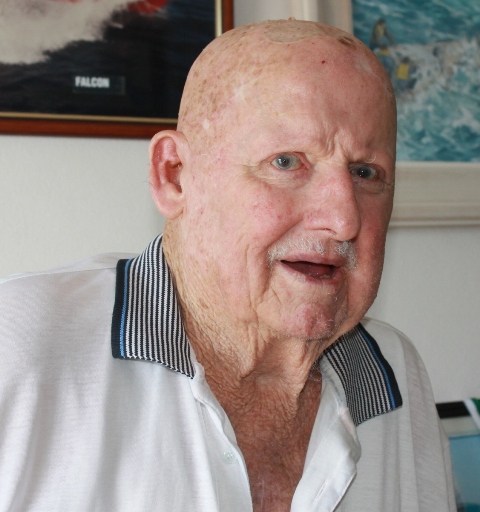 30 years altogether – I was 14 n the Pittwater; I did 10 at
the boatshed and about 4 at Collaroy. When I was at Collaroy I applied for the
boats and the Water Police but they wouldn’t accept me because I wasn’t ex-Navy,
as it was then. I had to get in by joining the Flood Boat section and making a
name for myself there. I established that I could handle a boat well and they
then accepted me.
30 years altogether – I was 14 n the Pittwater; I did 10 at
the boatshed and about 4 at Collaroy. When I was at Collaroy I applied for the
boats and the Water Police but they wouldn’t accept me because I wasn’t ex-Navy,
as it was then. I had to get in by joining the Flood Boat section and making a
name for myself there. I established that I could handle a boat well and they
then accepted me.
I was transferred tot here and got all the qualifications that were necessary. What made me cranky was once I’d got all the qualifications and had all the experience in the world, they still transferred me to Mosman on General Duties.
It wasn’t until, and I’ll use this expression, it wasn’t until ‘somebody pissed in the pickle’, that’s the only way of saying it, at Mona Vale and they wanted to transfer him to somewhere for penal servitude that I got a go. So I got transferred to Mona Vale, not because of any boating experience or any qualifications, I got transferred because this bloke had pissed in the pickle.
When I hear an officer say ‘we sent you out there to do a good job and you did that’ well I think ‘that’s crap. The only reason you sent me out there was because this bloke was mucking up and you had to get rid of him.’
What I did work at for at least five years was getting a full time show there.
Yes, you’ve saved lives Buster.
I was happy with that. It started and they said ‘do you want to transfer back to Sydney Water Police?’ but I was getting a bit long in the tooth, I was a First Class Sergeant by then; I said ‘yes, I’d like to go back to Sydney for my last few years’ (Sydney Harbour). They transferred me back there.
Were you there for the Olympics?
No. Boots (Gordon Wellings) came and got me one day – met me at Manly Wharf and took me out in the Falcon, which had been refurbished, going beautifully it was, because that was always my favourite – the Falcon. Boots said ‘we’re looking for someone to run the boat for Security for the Games.’ – ‘you wouldn’t get paid, you’d only be a volunteer’.
I thought about it, for about two minutes, and said no because at that time there was a lot of problems with the Arabs and also, I’d been retired for 18 years – my son pointed out (laughing) that there couldn’t have been any bloody decent boatmen there for 18 years after you left!
So I said to Boots, ‘no I won’t sign on thanks’ ; at this stage I was well overweight, still able to manage a boat but I didn’t feel that it was my job.
In 1983 I had the opportunity to attend the Life Boat Conference in Sweden if I paid my own fare. I had now retired from the N.S.W. Police so I took the opportunity. Most countries that had rescue craft attended and all the European vessels also attended. It was organised by the R.N.L.I. and hosted by the King of Sweden.
Each day we met at the waterfront and were given a choice to choose whichever boat we were interested in and spent 4-5 hours studying their techniques of rescue. We learnt that in their waters, quite cold, anybody not rescued in 15 minutes had very little chance of survival.
What did you do once you’d retired?
I went prospecting everywhere from the O’Allen River to the Shoalhhaven River to looking for sapphires up in Emerald in Queensland. I went as far as the river – Northern Qld, right up the tip.
I used to go up there for three or four months of the year, ‘in the season’ as we call it; you can’t get up there in the wet season, you’ve got to go in the Winter, so it’s cold but feasible to work there. You don’t have to dig real deep for sapphires but you’ve still got to dig a hole to get down to them. Where we went they were no deeper then three feet.
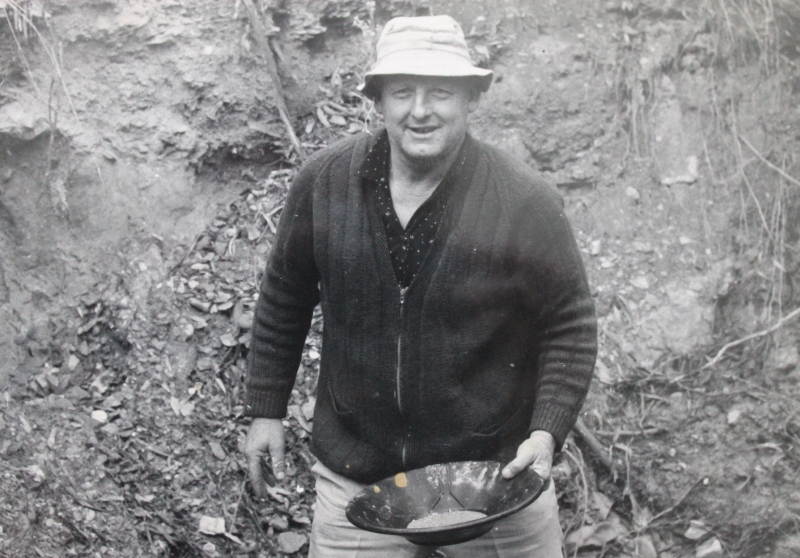
We’d get a variety – sapphires come in about seven different colours plus the particoloured ones. I got some beauties – all of my female relatives and female friends have got sapphire rings or sapphire brooches. I was a faceter; I’d learnt faceting and so was able to facet my own rings. My daughter has a lovely two and a half carat yellow- gold sapphire ring and some of the others have got two carat rings- they all finished with something nice.
When I visited Bert King he had a lovely model of a surf boat with by Buster Brown’ on the plaque beneath it – how did this come about?
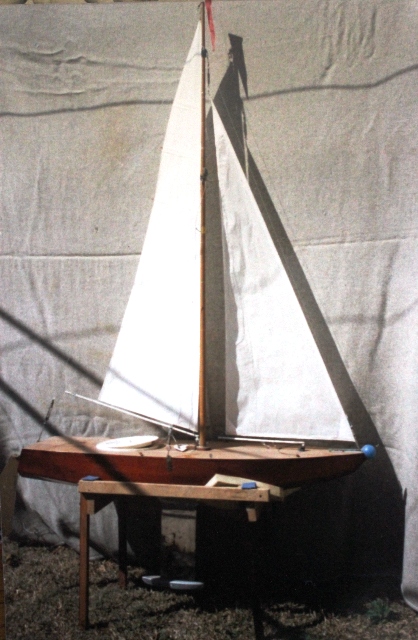 That was another hobby I had. I used to make model boats.
That was one that I made which he put on a different backing. How that came
about was I wanted a Surf Belt – he had one, and I said ‘I’ll swap you.’ so I
got the belt and he got the boat.
That was another hobby I had. I used to make model boats.
That was one that I made which he put on a different backing. How that came
about was I wanted a Surf Belt – he had one, and I said ‘I’ll swap you.’ so I
got the belt and he got the boat.
I use to race radio controlled sailing boats at Narrabeen – on the lagoon. There’s a big firm in Brookvale that used to make spars and booms and all that. they put on a contest for who could build the fastest model yacht.
I wrote to them and said I’d like to try this and they said you’re welcome, put a boat together. I had about six months to build the boat, building from my own design, and finally the day came when we had the big race. There were probably 30 entries and 26 of them were shop made boats and so they weren’t all homemade boats, which was what I thought they were supposed to be. Shop or professionally made boats do go better – but I came 4th in the private and homemade boats so I was quite happy with my performance.
I made a radio controlled yacht for each of my grandkids – some they’ve still got. The last one I gave to my grandson and he sails it on Manly Dam.
How many children did you have?
Four. Grandchildren 8, and great-grandchildren – now 3; one was born a year ago and one was born a month ago. My eldest son now lives in Perth and he came over last year, picked me and the rest of my kids up in a motor-home, and we drove back to Perth and went to the wedding of my eldest granddaughter. When the wedding was over the other kids came home by plane and Allan took me, with his wife as well, the long way home up through the Top End.
It would have been fantastic excepting the bloody vehicle broke down nine times; we lost nine days, it spoilt the trip – we got to Broome but didn’t actually get to Darwin. I’m too old and decrepit to do the trip again now.
What is your favourite place in Pittwater and why?
Coaster’s Retreat. It brings back a few memories – everybody used to go over there camping; I knew lots of people that would go over there every year and would reserve a camping spot for the following year. That spoilt it for other people as they couldn’t get in.
It’s a lovely place with a lovely protected pool at the back. On the Western Shores I’ve met some lovely people. One chap, I’ve forgotten his name, he was a first grade footballer, I think he played for Manly; he dived off the wharf and was injured. I used to go and visit him occasionally – he was a champ. He was in bed all the time, he couldn’t get out of bed – I’d go and see him and talk for a bit – he was a champ even after that.
I used to have a few fights with them over there; one time there was a house on fire. I went over there and the rain was coming down heavier then if I’d put a hose on it. So it was a waste of time me even starting up the pumps, even if you forgot the fact that the wharf was about five hundred yards away and I didn’t have five hundred yards of hose.
The people that were next door, where I was, on their verandah watching the fire, which was just about finished and I couldn’t do anything – they offered me a cup of tea. I had the cup of tea – which was lovely. When I got back to base I had a complaint to answer – that I was drinking alcohol, (beer) with a criminal, while I watched the fire burn!
Holy Mackerel!
Half of the township over there were on my side and the chap who was the ex-footballer rang the Premier and explained the proper situation. I didn’t get into any trouble as a result of that but it could have been quite serious. That was some of the good people and some of the bad people illustrated for me in that one incident.
What is your ‘motto for life’ or a favourite phrase you try to live by?
Do it once and do it well.
Further:
A Cruel Sea by Gordon Wellings Q.C., B.C.
Brian Friend 'Friendly' Profile
The Story of the making of the paintings illustrating the “Falcon” rescue of “Votan” and her crew – Sunday 9th June 1974 by Christine Hill FASMA
Roper Lars Scott (Buster) Brown - ‘LEGEND of the SEA’ by Brian Friend, OAM-QCBC - On Friday 7th of February, at the Pt Clare Marine Rescue Base at Gosford, RLS 'Buster' Brown was presented with a his 'Life Membership' and 'Long Service' awards to the RVCP (now Volunteer Marine Rescue). Brian Friend, OAM, a fellow Retired Water Policeman was in attendance and shares an insight into one of Pittwater’s finest.
Broken Bay Water Police - History page from On Water Organisations Month Broken Bay Marine Rescue - Volunteer Coastal Patrol - History page from On Water Organisations Month
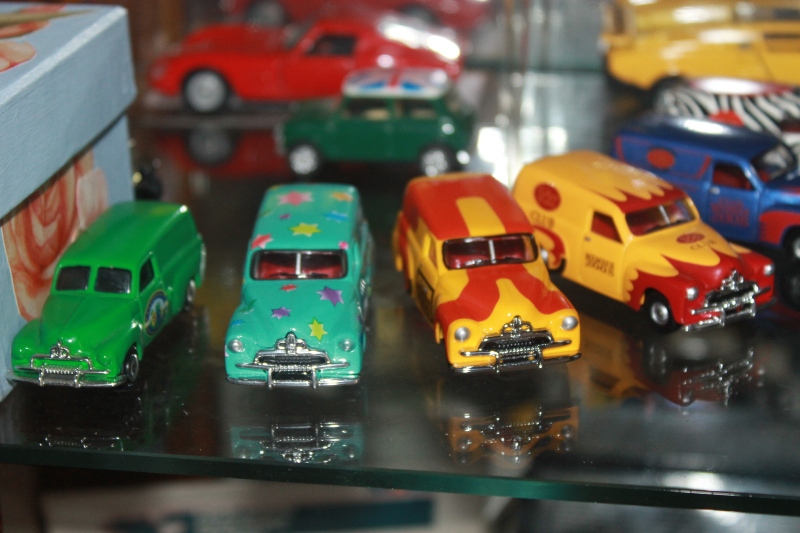
Buster collects toy metal cars now as there were no toys like these during WWII - all metal was collected and used for War Service
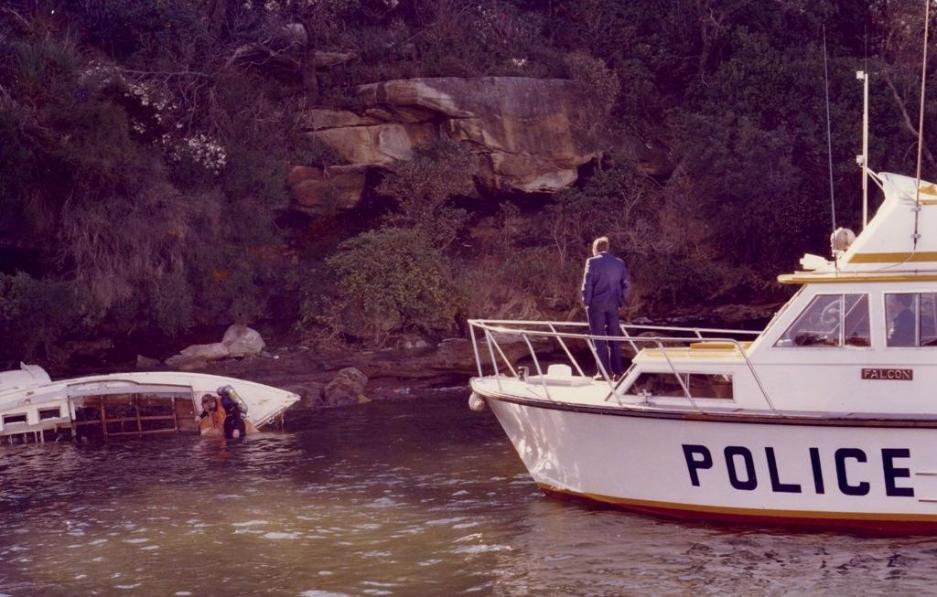
Copyright Roper Lars Scott (Buster) Brown Q.C.B.C., 2014